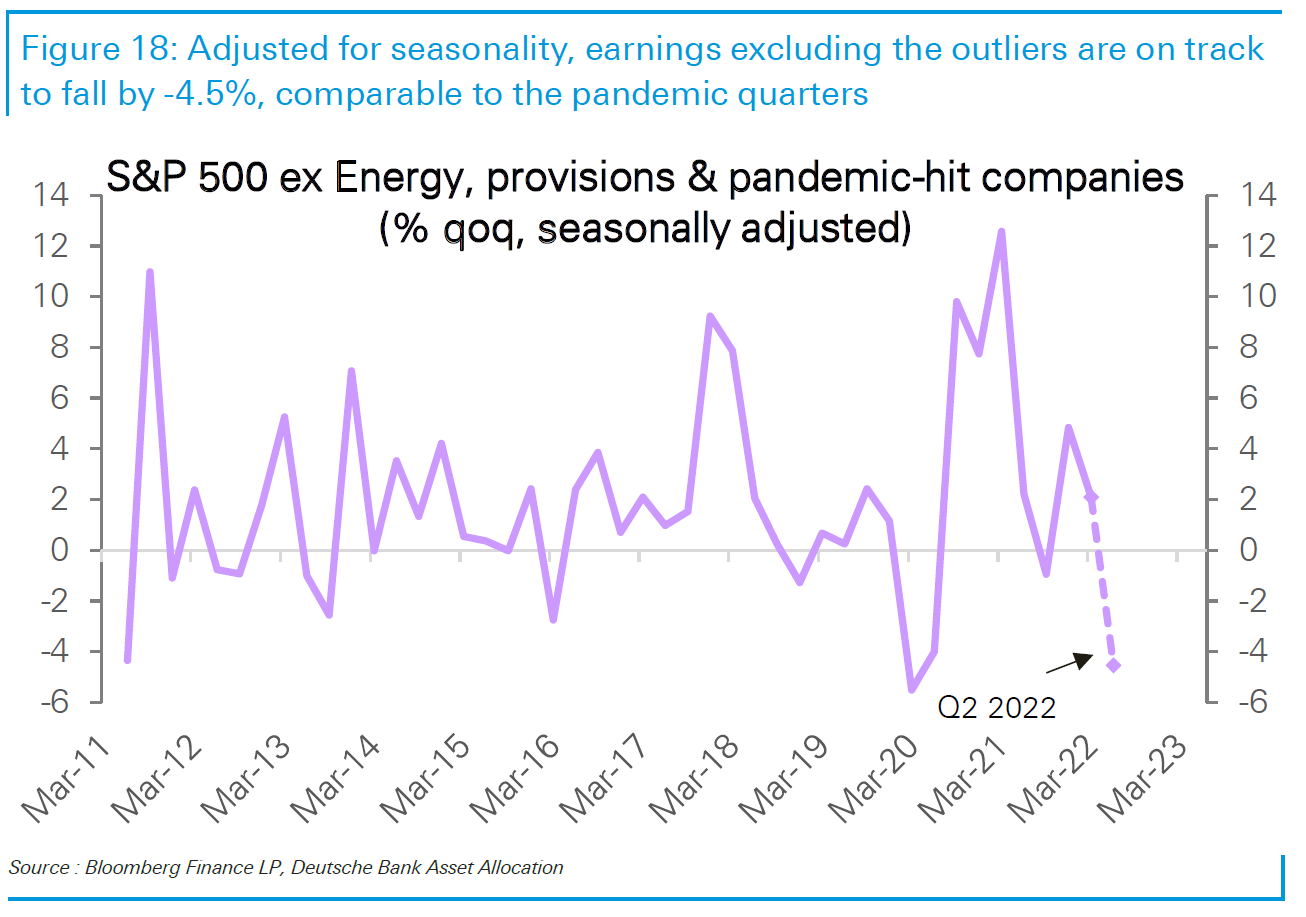In keeping with our perpetual motto — “Earnings are the mother’s milk of stock prices” — we are listening to a lot of earnings calls and digesting a lot of companies’ commentary about their current environment and their anticipation of future developments, asserts Monty Guild in Guild Management's Market Commentary.
We are also looking more broadly at market- and sector-level earnings performance and forecasts. With the U.S. economy in a technical recession, and Europe in particular facing stiff economic, financial, and geopolitical headwinds, what do earnings and economic data have to tell us about the environment that’s emerging? What can we learn about what lies ahead in the rest of 2022?
And most importantly for investors, how should we be thinking about the present rally — is it an all-clear, or a chance to position for another pullback and better opportunities later in the year? (Spoiler alert: No, it is not an all-clear; yes, we believe it to be a bear-market rally.)
Year-over-year, as of last week, the S&P 500 was showing a 9.4% earnings rise. Take out inflation and it is still modestly positive. The problem is that the market-level headline conceals sector-specific variances that paint performance in a different light.
The energy sector alone is responsible for a 10.5% boost to the earnings of the S&P 500 as a whole. If you strip out the impact of energy earnings, and also the recovery of the hardest-hit pandemic sectors, overall nominal earnings fall to about -3.1% — with real earnings, of course, considerably lower.
Sequential earnings, i.e., quarter-over-quarter rather than year-over-year, when seasonally adjusted, are set to fall by 4.5% nominally — one of the steepest declines in the past decade and rivaling the decline seen in the early days of the covid pandemic.
The second quarter is typically strong — between 2011 and 2019, the second quarter saw a median 4.4% sequential growth — so this decline is a genuine indication of weakness.

Source: Deutsche Bank Research
Notably, this is deeper than the “earnings recession” of 2015, which created a very challenging period for U.S. stocks. The S&P 500 had trouble making progress when S&P earnings stopped growing in late 2014 and declined into 2016. We also note that one of the culprits restricting US corporate profit growth then, is with us now in 2022: a strong U.S. dollar.
Notably, while energy earnings are buoying the index-level results, the leaders of the pandemic period — the so-called “mega-cap growth” tech stocks, are having a harder time, with sequential earnings down over 5%.
That is still just “catching down” to the long-term trend, but it is indicative that they may not emerge as the clear leaders from the current bear market, however long it lasts. Further, NASDAQ 100 earnings have been lagging S&P 500 earnings since September, and that trend has accelerated.
As for the revenue line, topline growth excluding energy has declined to a nominal 4.5% (real, of course, much less). Sequentially, nominal earnings excluding energy are flat — again, in a quarter that is usually seasonally strong.
Margins tell the same story again — index-wide margins are holding up simply because of energy, but if you strip that out, margins are declining sequentially and are well below the record high set in the first quarter of 2021.
Earnings definitely confirm the other high-frequency economic data indicating that a slowdown is underway — whether you want to hold to the technical definition of a recession (two consecutive quarters of negative GDP growth) or not.
In the leadup to second-quarter earnings, analyst forward estimates for third-quarter earnings were cut 3.6% excluding energy, and since earnings season got underway, have been cut another 2.8%. Estimates for full-year 2022 had come down 0.8% coming into earnings; they have fallen another 1.6% (again, excluding energy).
The trouble is that this isn’t enough: earnings estimates need to decline further to reflect the reality of economics, interest rates, contracting liquidity, and geopolitical stress. A look at the last few recessions shows that markets tend to bottom after estimate cuts reached a crescendo, and we are not there yet.
Looking from the market’s January peak, forward estimates are still up 7% overall. Simply put, we need to see estimates of future earnings come down significantly before we believe that a market bottom is in.
Investment Implications:
In spite of deteriorating data, July saw a strong rally — a bear-market rally, in our view — largely because sentiment and positioning had become so bearish in June. This rally has continued in spite of the looming headwinds of poor economic data, pressure from the Fed, and continuing inflation.
In our view, the current rally could peter out soon, and we anticipate further stock market weakness later in the year as analysts finally begin to take their forward earnings estimates down to what will be their ultimate nadir. This is a good time to trim positions that have perhaps rallied beyond what the underlying economic and earnings fundamentals can support.





















